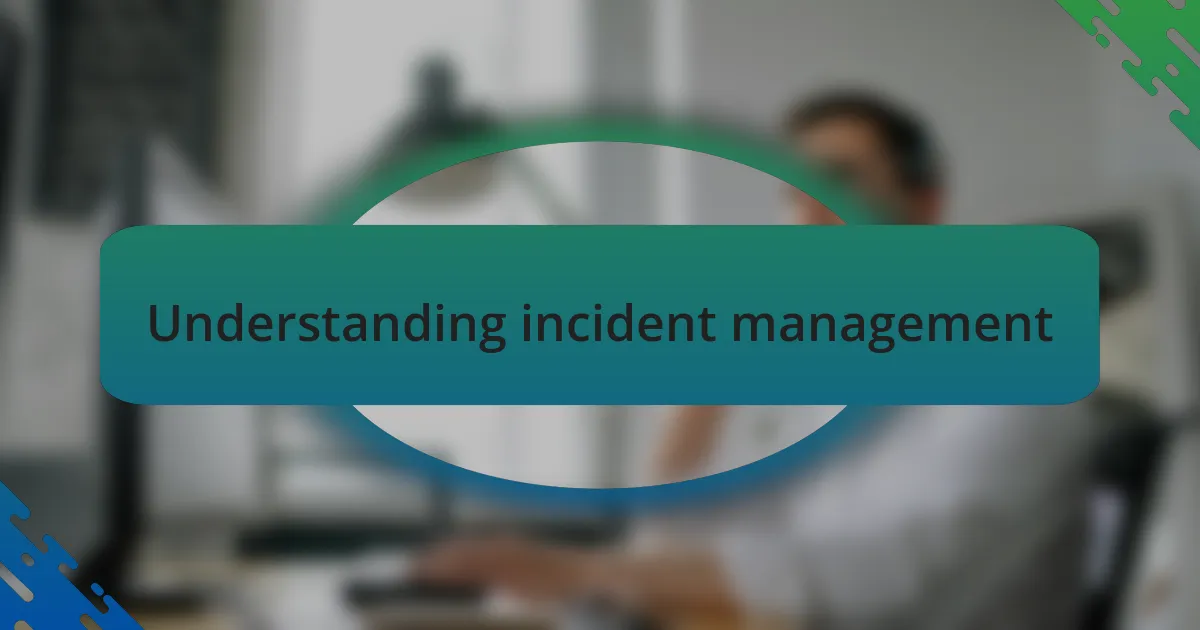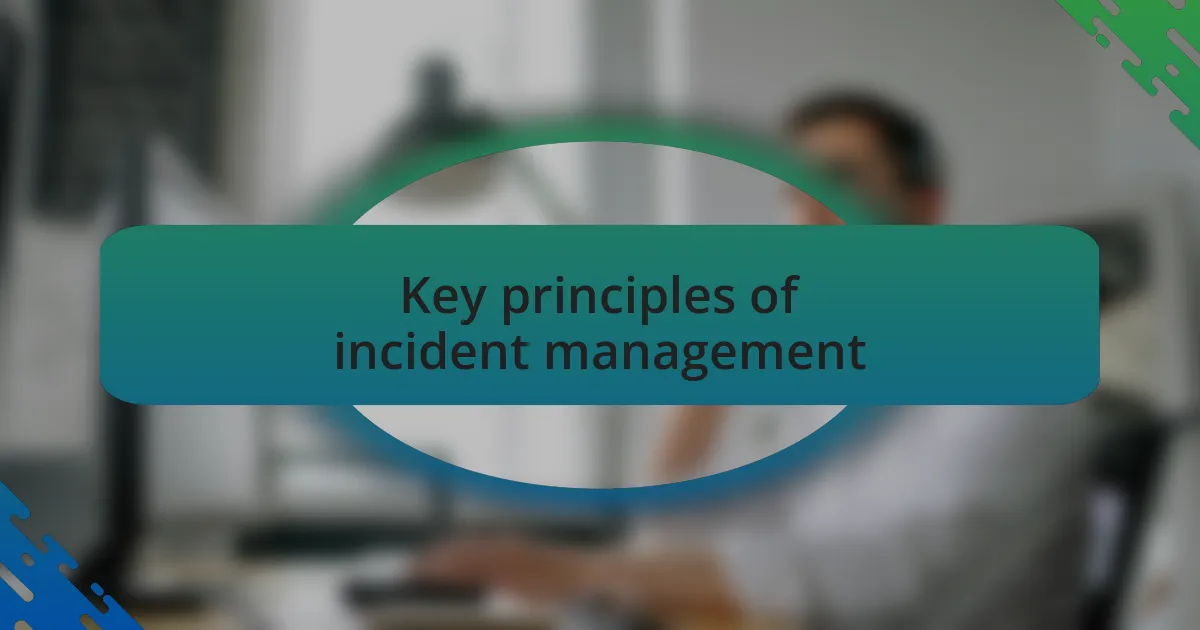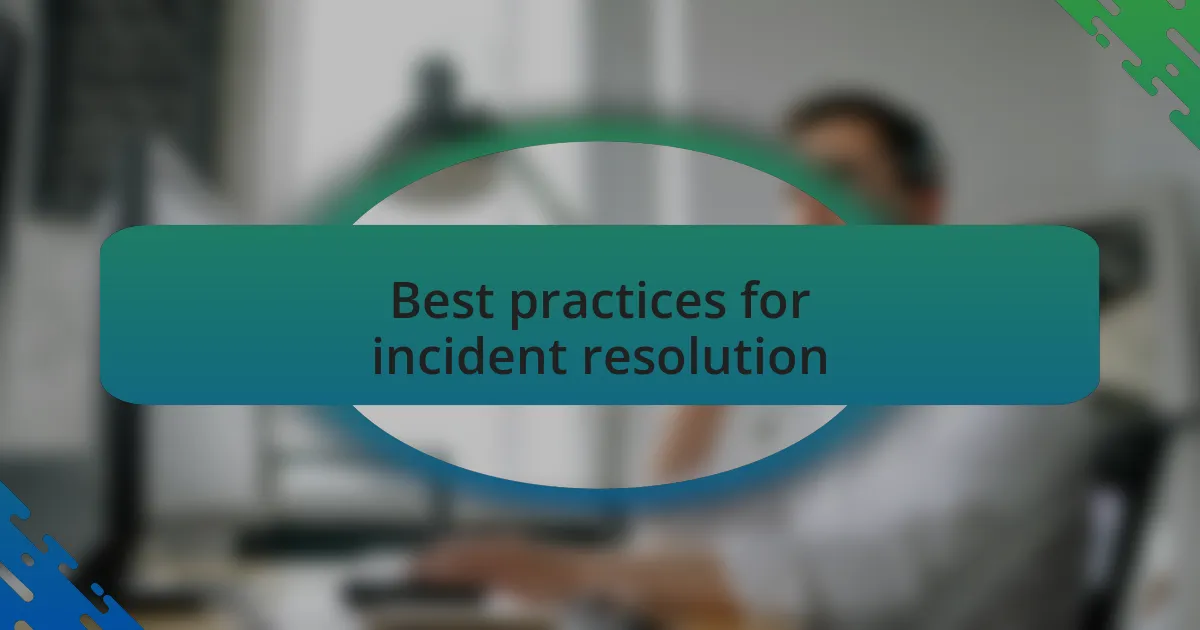Key takeaways:
- Incident management is critical for addressing service disruptions, with a focus on understanding root causes to prevent recurrence.
- Effective communication and team collaboration significantly enhance incident response efforts.
- Prioritization of incidents and thorough documentation improve efficiency and future preparedness.
- Continuous improvement through retrospectives fosters a culture of learning and resilience within the team.

Understanding incident management
Incident management is a crucial part of software development that revolves around addressing unforeseen disruptions in service delivery. I remember a time when our system faced a sudden outage; the chaos that ensued made me fully appreciate how vital effective incident management is. It’s not just about fixing problems quickly; it’s about understanding the underlying causes to prevent future occurrences.
In my experience, being proactive rather than reactive has made all the difference. Have you ever noticed how often the same issues crop up if they aren’t addressed properly? A solid incident management process helps teams to analyze incidents, learn from them, and gradually build a more resilient system. Embracing this mindset has transformed how I tackle challenges—I now view them as opportunities for growth.
Understanding incident management also involves effective communication. I’ve seen teams crumble when they lack a clear line of communication during an incident. Reflecting on my experiences, timely updates and collaborative efforts can reduce frustration and build trust, not just within the team, but also with stakeholders who are anxiously waiting for resolutions. Don’t you think a well-coordinated response makes all the difference?

Key principles of incident management
One of the key principles of incident management is prioritization. I remember a particularly stressful weekend when multiple issues arose at once. We faced a choice: fix minor glitches or tackle a major service outage. By prioritizing the most critical incidents first, we not only restored service quicker but also minimized the impact on users. It’s interesting how a clear hierarchy can change the pressure from overwhelming to manageable, isn’t it?
Another essential principle is documentation. Early in my career, I overlooked the importance of recording each incident thoroughly. Over time, I learned that having a detailed log allows teams to identify trends and helps in quick resolution in the future. Have you ever realized how vital it is to have past experiences at your fingertips? It transforms the incident management process from a reactive scramble into a structured approach, where each resolved issue feeds into future strategy.
Finally, I can’t stress enough how critical it is to engage in continuous improvement. After resolving an incident, I make it a point to conduct a retrospective with the team. It’s not just about what went wrong but recognizing what we did right and what can be enhanced for next time. Isn’t it amazing how each incident can pave the way for better practices? Embracing this principle has not only made our processes smoother but has also fostered an environment of learning and growth within the team.

Best practices for incident resolution
When it comes to resolving incidents, communication often takes the spotlight. I recall a challenging incident where miscommunication nearly derailed our response efforts. By ensuring that all team members were on the same page, we could work cohesively and resolve the issue faster. Isn’t it fascinating how a brief huddle or a quick update can turn chaos into collaboration?
Another practice that has served me well is the concept of a post-incident review. I remember an instance when we resolved a significant outage but failed to identify the underlying cause initially. A thorough review not only prevented the same issue from cropping up again but also fostered a culture of transparency within the team. Reflecting together on what transpired can transform a negative experience into a learning opportunity, wouldn’t you agree?
Lastly, leveraging the right tools can make a world of difference during incident resolution. I have found that using centralized platforms for tracking issues helps streamline responses and provide real-time updates. It’s incredible how having all the information in one place can reduce the time spent searching for details, don’t you think? By adopting effective tools, teams can focus on what truly matters—restoring services and supporting users efficiently.

Lessons learned from my experience
One lesson that stands out vividly in my mind is the importance of learning to prioritize tasks under pressure. I remember a time when our team faced an unexpected outage during peak usage hours. It was chaotic, and everyone had ideas on how to tackle the problem, but I quickly realized that assessing the situation and prioritizing actions based on severity was crucial. How often do we let urgency overshadow effective decision-making? By focusing on what required immediate attention, we not only resolved the issue more efficiently but also kept our cool in a high-stakes environment.
Another key takeaway for me is the value of team dynamics in stressful situations. There was an incident where I could visibly see tension rising among team members as tempers flared during a particularly long outage. I decided to take a step back and encourage everyone to share their thoughts openly. It was incredible how this shift transformed our approach. Suddenly, the atmosphere lightened, and collaboration surged. Have you ever noticed how fostering an open dialogue can be the antidote to frustration? I learned that creating a safe space for discussions can lead to innovative solutions and build a more resilient team.
Finally, I can’t stress enough how emotional intelligence plays into incident management. I recall a specific incident where a junior team member was overwhelmed and struggling to contribute effectively. Instead of pushing harder, I chose to check in with them, asking how they felt about the situation. This small gesture not only alleviated their anxiety but also encouraged a sense of camaraderie. Why do we sometimes overlook the human side of managing incidents? I discovered that empathy can profoundly impact our responses and encourage a more cohesive effort in overcoming tough challenges.